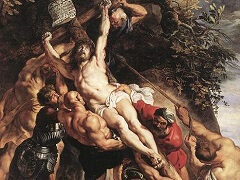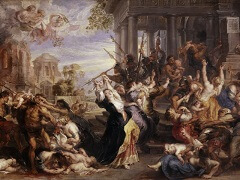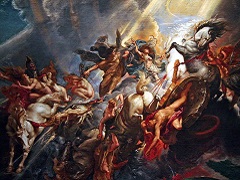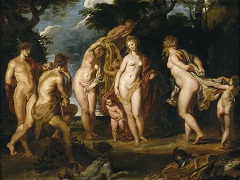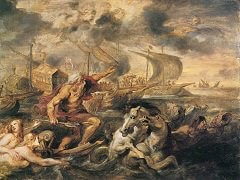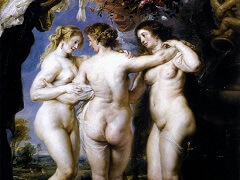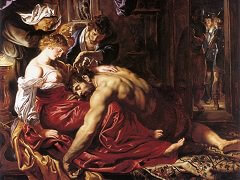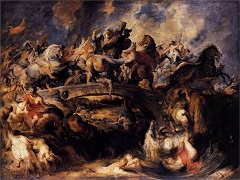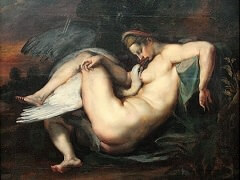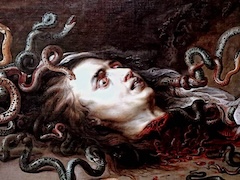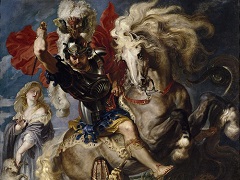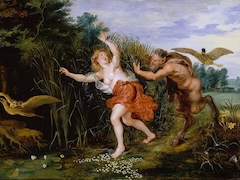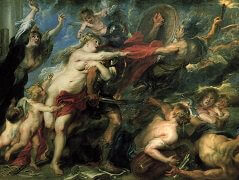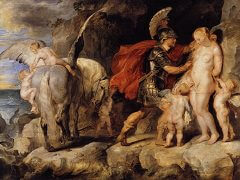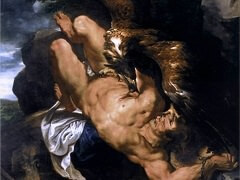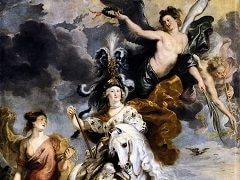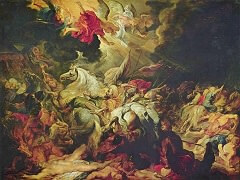The Hippopotamus and Crocodile Hunt, 1615 by Rubens
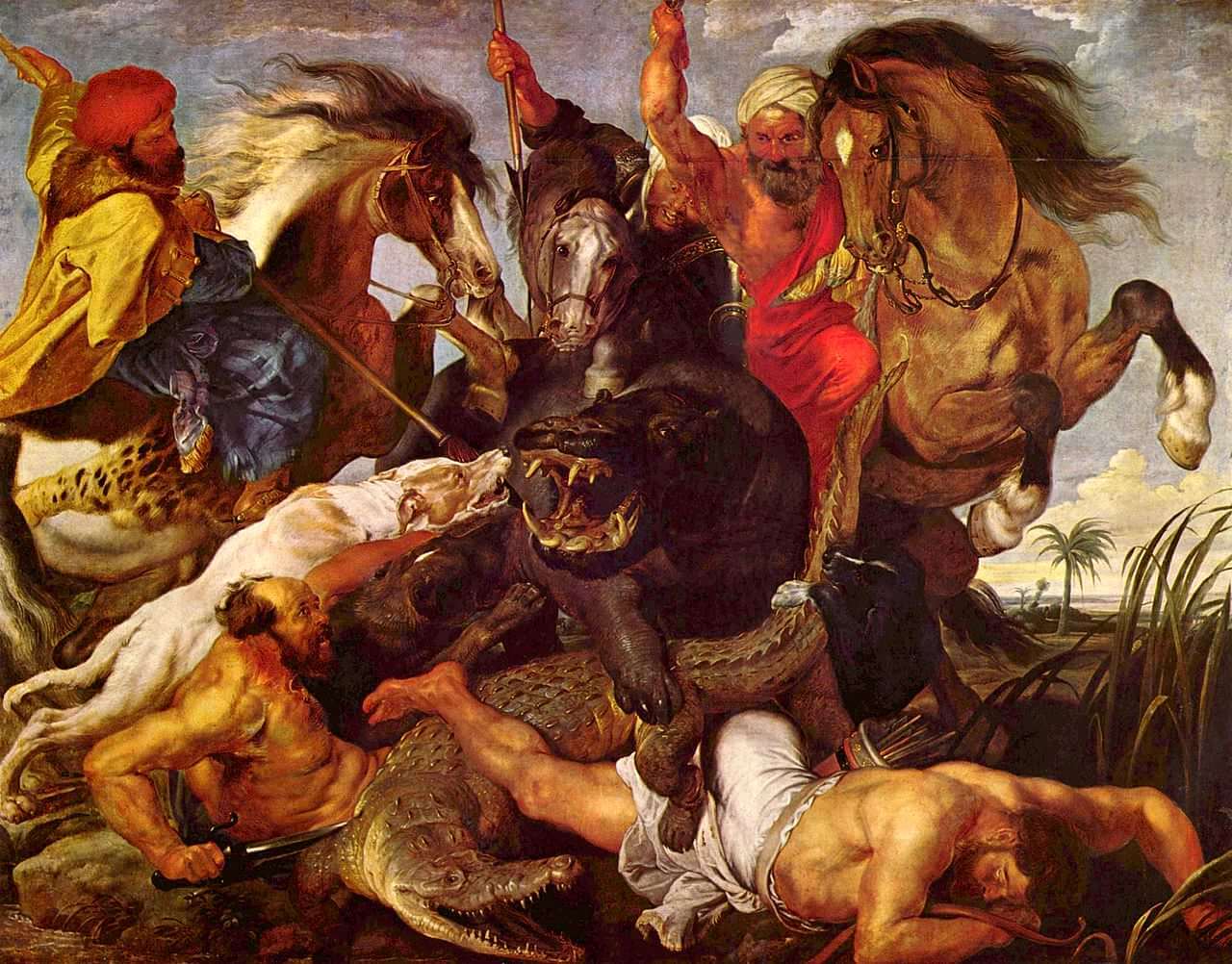
The Hippopotamus and Crocodile Hunt is a large painting by Peter Paul Rubens, featuring the hunt on hippopotamus and crocodile with three hunting dogs. There is also a reference to a leopard in the pelt on the horse of the
upper left rider. Rubens used the dramatics of diagonals to heighten the sense of immediacy and movement and redirected attention downward into the center of action.
The Hippopotamus and Crocodile Hunt is one of the four hunting paintings, commissioned by Maximilian I, Elector of Bavaria to decorate the old Schleissheim Palace. After the seizure of this cycle during the Napoleonic Wars only
The Hippopotamus and Crocodile Hunt was returned to Munich. In the notice of January 25, 1847 Eugene Delacroix admired the crocodile as a "masterpiece of execution", remarking, however, that "its action could have been more interesting".
Although not realistic, Hippopotamus and Crocodile Hunt is a statement about man's struggle with the beast as well as nature as a whole. It is a painting of opposites between smooth and scaly, dark and light, the
high and low, beauty and barbaric.
This painting is an excellent example of the Baroque style because it uses vivid colors to portray a dramatic and highly emotional scene. The layout of the painting is slightly off center with most of the action happening
to the left side of the painting and a calm spot to the right. The Hippopotamus and Crocodile Hunt is a great example of how artists of that time captured emotion and movement.

